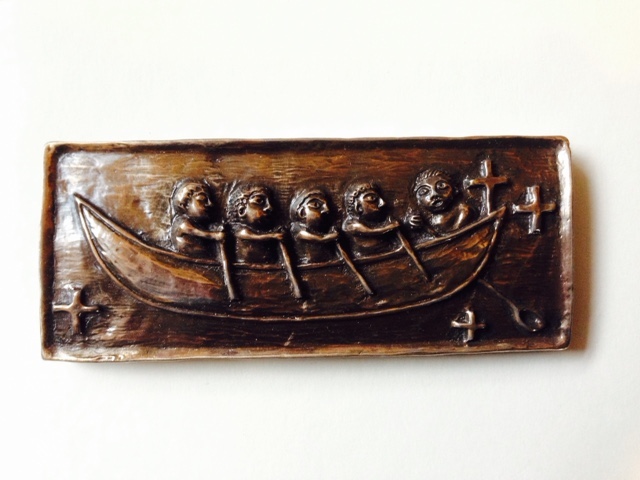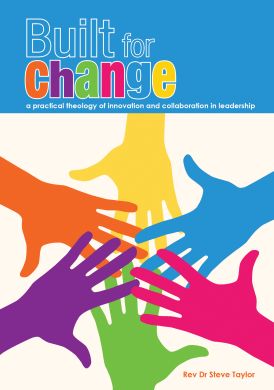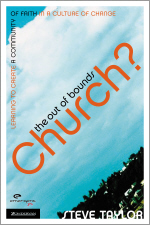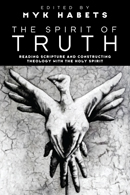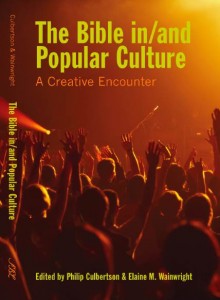Monday, March 18, 2024
unless a grain of wheat falls: Lent 5 DIY Dying to live seed sprouting prayer resource
It was fun to make up wheat seeds as a DIY practical prayer resource for Sunday (Lent 5B) worship! The Dying to live prayer resource was sparked by the words of Jesus in John 12:24 24 – “unless a grain of wheat falls into the earth and dies, it remains just a single grain, but if it dies it bears much fruit.” The verse got me researching wheat seeds.
First, was realising that some wheat can be planted in autumn and other wheat in spring. So the verses from John 12:21 work equally well in Northern (spring) and Southern (autumn) hemispheres. So giving out wheat in the autumn/Lent in the Southern hemisphere was realistic.
Second, was realising how easy, fast and nourishing it is to spout wheat.
Third, was locating resealable plastic bags, to provide for ease of carry and address any hygenie concerns.
Fourth, was making up a handout with those easy sprouting instructions, along with a short prayer.
The result was a DIY practical prayer resource, given out during the children’s talk (when I played a youtube video of seeds sprouting). Then, the invitation during prayers for others to hold the seats as we prayed for seeds of justice to sprout in our world and seeds of Spirit to sprout in our community and in us. Finally, the invitation to prayer with seeds sprouting in the week coming.
Here’s the Lent 5B Dying to live seed sprouting handout I made up …
Friday, February 09, 2024
Douglas Coupland, Charles Taylor, and Spirituality in Modernity chapter in Bloomsbury Academic
I’m delighted today to sign a contract with Bloomsbury Academic for a chapter on faith in contemporary culture, a dialogue between Douglas Coupland and Charles Taylor. Coupland is an author and artist, famous for writing Generation X. Charles Taylor is a sociologist, famous for big books on secularisation.
The chapter is a co-authored piece, with Tony Watkins. Together, we outline the work of Charles Taylor and in particular his biographies of conversion in modernity. We then bring these into conversation with converting moments in 3 of Coupland’s books – Polaroids from the Dead, Generation X and Generation A. We outline how the characters in Douglas Coupland’s fiction are experiencing transcendent moments, and what that means for contemporary faith.
The chapter began as a sermon at Graceway Baptist Church, way back in the day! I did some work on Douglas Coupland in my PhD, which became a class at Laidlaw College (Christchurch), in which I explored salvation in modernity. Then at Uniting College, I offered an honours course on Charles Taylor. I began to write about Charles Taylor’s conversion biographies in my 2019 book, First Expressions: innovation and the mission of God, when I looked at how art and creativity in alternative.worship communities connect with contemporary culture in public mission.
An online conference in 2021, focused on the work of Douglas Coupland, wonderfully hosted by Mary McCampbell, Diletta De Cristofaro and Andrew Tate, allowed me to bring together Coupland and Taylor. The chapter in this Bloomsbury book offers a spoken conference paper in a written form.
It’s wonderful to be exploring contemporary spirituality and conversion theologies in contemporary literature and to see various strands of thinking over many years come together in written form.
Wednesday, January 31, 2024
Compassionate Collaboration, Christian Mission and the Bank of Dave
 “Compassionate Collaboration, Christian Mission and the Bank of Dave” is a piece of my writing now published in the Practical Theology Hub, (online in January 2024).
“Compassionate Collaboration, Christian Mission and the Bank of Dave” is a piece of my writing now published in the Practical Theology Hub, (online in January 2024).
The piece works between contemporary culture and a theology of social innovation. I work to bring the ministry of Jesus into conversation with a movie and sugges surprising insights into the nature of compassion and the depth of collaboration in mission with Christ.
The back story. The piece began as a 500 word written film review for Touchstone magazine (for whom I write monthly). As I was writing the film review, I was also down to speak at my local Presbyterian church (where I also preach monthly). As I worked with the suggested Gospel reading from the lectionary, I found some fascinating connections between the reading (Matthew 9:35-41) and the film. A listener encouraged me to write it up. Which took me a lot longer than I anticipated, as I struggled to turn spoken words into a written piece.
I persisted, helped by the concept of a research stash, and the idea of a stash as a store or supply of something, and working to turn something hidden (shared with a congregation) into something more visible (written online). Practical theology hub were ideal. First, because they take pieces up to around 2,000 words, which was about the length of the sermon. Second, they are online and accessible, so my words would not be hidden behind paywall.
Tuesday, January 30, 2024
Writing in 2023: 120,000 words spread over 28 outputs
Writing is a significant part of my current vocation.
And writing is a challenge. The ability to compile evidence and shape an argument in ways that attend to detail and fill in a big picture is an exacting process.
Writing is also always a vulnerable process. Organisational psychologist Adam Grant suggests that the best way to gauge the quality of someone’s ideas is not to listen to them talk but to read their writing. Most of us can only hold 3 or 4 thoughts in our heads. So charisma and verbal gymnastics can mask weak logic.
In contrast, developing thoughts on paper allows someone to read page 5 and then flick back to page 1 to check if I am being consistent. Hence, writing makes us vulnerable because it exposes our ability to think.
Stepping into a new year of work, it is good to reflect on the writing challenges of the year past. In 2023, I made myself vulnerable with 28 different written outputs, nearly 120,000 words. These included
- 2 academic book chapters
- 2 academic funding bids
- 4 other academic outputs
- 5 commissioned research reports
- 10 film reviews
- 5 magazine columns
Word wise, most of my output (76%, some 90,000 words across 5 outputs) was on research commissioned by organisations in Australia and Aotearoa New Zealand. As part of professional benchmarking, I also offer academic contributions (16%, some 18,800 words across 8 outputs). Aware that academia involves paywalls, I also look for popular outlets (8%, some 9,250 across 15 outputs).
Breaking down the 28 outputs in more detail …
Book chapters (2)
- “Douglas Coupland, Charles Taylor, and Spirituality in Modernity,” an academic book chapter (5000 words), co-written with Tony Watkins. This piece of writing began life through a 2021 conference presentation, which is due for publication in an edited volume on artist and writer Douglas Coupland with Bloomsbury (UK) in 2024.
- “Mission in digital cultures: Opportunities and challenges in a mundane co-mission,” an academic book chapter (5000 words) for the Oxford Handbook of Digital Theology. Two conference presentations in 2022 helped develop ideas. Written in February 2023 and revised in September 2023, this should be published in an edited volume with Oxford University Press in 2024.
Academic funding bids (2)
Seeking international funding for research involves writing, and has particular challenges in linking research approaches and plans with funder aspirations.
- “Digital activism as justice-making. Evaluating decolonial public theologies on Christian social media platforms” was a research bid that gained funding and research support from the University of Edinburgh, planned for June and July 2024.
- “Race and justice in Glasgow’s mission history: a reappraisal of South Sea missionary networks and their relationships to “blackbirding” was a research bid submitted to the University of Glasgow Library Visiting Research Fellowship (awaiting decision). The application was built on a successful 2022 application and seeks to extend the archival work I did in August and September of 2023.
Other academic contributions including book reviews, journal editorial and online article (4)
- A book review of Keeping Faith: How Christian organisations can stay true to the way of Jesus, by Stephen Judd, John Swinton and Kara Martin, was published in Australian Journal of Mission Studies in December 2023
- A book review of Constructing Mission History: Missionary Initiative and Indigenous Agency in the Making of World Christianity by Stanley H. Skreslet for the Anvil Journal of Theology and Mission
- Editorial for the December 2023 issue of Ecclesial Futures, an open-access academic journal I co-edit with Nigel Rooms.
- “Compassionate Collaboration, Christian Mission and the Bank of Dave” was a conversation between contemporary culture and theologies of social innovation. This began as a written film review, then a spoken sermon, and finally a written output submitted to Practical Theology Hub on October (and published online in January 2024).
Commissioned research reports (5)
In my work for AngelWings, I provide high-quality research for organisations and agencies. The research is co-designed, with results provided as written reports for boards and key leaders.
- Theological education and ministry training review – working with a colleague to develop a 20-year framework for theological education and ministry training. A report of 55,000 words was delivered in April 2023, along with four six page summaries
- Evaluation of innovation – assessment of an initiative to bring congregations and a social service agency closer together. A report of 9,100 words along with a two page press release was delivered in October 2023.
- Missional needs and opportunities review – working with two colleagues to review how a denominational group resources mission. A 12,500-word report was delivered in July 2023.
- Property use – an 8,200 word report documenting stakeholder perceptions relating to sale of property and mission was delivered in December 2023.
- Educational consultation – A 5,500-word report peer reviewing a new higher education initiative was delivered in November 2023.
Together, these 5 outputs total 90,000 words. That’s a lot of ink. Because this research is commissioned, what is written belongs to the governance boards that provide the funding. However, I continue to explore avenues by which elements of my commissioned research that have public interest could be reworked.
Film reviews (10)
Monthly I watch a movie and write a 500 word film review for Touchstone, a Methodist denominational magazine. I enjoy the discipline of writing to honour the integrity of a film in conversation with theology and ethics and in 2023, provided ten film reviews.
Zadok columns (5)
Quarterly I contribute a column for an Australian magazine, offering Christian reflection on various contemporary issues. So, in 2023, to meet deadlines, I provided five 850-word contributions.
Monday, December 11, 2023
Loop Track: theological film review
 Monthly I write a film review for Touchstone (the New Zealand Methodist magazine). Stretching back to 2005, some 170 plus films later, here is the review for December 2023.
Monthly I write a film review for Touchstone (the New Zealand Methodist magazine). Stretching back to 2005, some 170 plus films later, here is the review for December 2023.
Loop Track
A film review by Dr Steve Taylor
With days lengthening and summer peeking around the corner, many Kiwis will embrace the outdoors. Bush tracks beckon, with the promise of bird song and river bank. We might find ourselves walking behind tourists, eager for a sighting of our flightless birds. Loop Track is Kiwi made horror that presents a darker vision of our great outdoors.
In Loop Track, Ian (Thomas Sainsbury) heads bush. On the edge of a nervous breakdown, desperate to dodge human contact, Ian starts at every sound.
As Ian imagines the worst, his fellow trampers provide a kindly foil. Nicky (Hayden J. Weal) offers tramping socks for Ian’s blistered feet. Monica (Kate Simmonds) gives flowers to brighten Ian’s mood. Austin (Tawanda Manyimo) shares stories from his country of origin.
The mood of Loop Track darkens when Nicky disappears. A gentle humouring of a man jumping at every shadow suddenly shifts. What if dark, not light, lurks around the bend?
The bush as a character plays a variety of roles in the films of Aotearoa New Zealand. In Muru (2023), alienated Māori find identity in the bush. In We are Still Here (2023), the outdoors is shelter for Māori avoiding settler lust for land. In these films, the outdoors offers plenty as places of connection and re-connection.
In other Aotearoa films, the bush is a place of darkness. The suspense of Sleeping Dogs (1977) and the isolation of The Piano (1993) rely on the bush as a place of unease. These films are in step with the poetry of James K Baxter and his description in The Mountains of the outdoors as a cold and crouching menace.
Mention horror films, and we think of Alfred Hitchcock’s 1960s film Psycho or Jonathan Demme’s 1991 The Silence of the Lambs. Horror films draw on light and sound. Shadows hide, creating uncertainty. Sound amplifies the beating of a fearful heart.
Both sound and light are skillfully used in Loop Track. Thomas Sainsbury not only plays Ian. He also writes and directs. Better known for comedy, Loop Track showcases Sainsbury’s many talents.
Horror is an increasingly popular genre of film, rising from 3 per cent of the market in 1995 to nearly 18 per cent in 2021. How might Christians engage with this trending genre? For theologian, Dr. Mark Eckel, horror offers a form of truth-telling. Watching horror, we find ourselves reflecting on the origins of evil, the nature of the supernatural and the darkness of human nature. For Chad and Carey Hayes, who partnered in writing the first two Conjuring movies, horror creates arcs of redemption.
“What we’ve tried to do is create films with redemption. They have happy endings.” (Acosta, Cedars, 2021).
An arc of redemption summarises the long journey of Loop Track. As the movie ends, Ian walks down the road he drives up as the film begins. Stopping a passing car, he utters a single word, “Help.” For a person on the edge of the horror of a breakdown, asking for help is a perfect place to begin a walk toward redemption.
Rev Dr Steve Taylor is the author of “First Expressions” (2019) and writes widely in theology and popular culture, including regularly at www.emergentkiwi.org.nz.
Tuesday, November 21, 2023
spreading the word: making as a way of being in the world in the Ordinary Knitters research project
 It’s a big week of interviews this week in the Ordinaryknitters research project. I’m loving chatting with knitters – this week in England, New Zealand and Australia – about remembrance poppies and climate scarves and knitting in public places.
It’s a big week of interviews this week in the Ordinaryknitters research project. I’m loving chatting with knitters – this week in England, New Zealand and Australia – about remembrance poppies and climate scarves and knitting in public places.
We’re “spreading the word” commented someone this morning. What a lovely phrase and we then enjoyed thinking about how things that are made can spread “words”. And what “words” are these made things spreading. It’s all so fascinating to reflect on how making is a way of being in the world.
There is show and tell, of garments and pictures of knitted things in public places. There are stories, of how making enhances well being, builds community and creates connections.
In a few weeks I hope to shift from interviews and begin analysing for shared themes across the nearly 40 people I have interviewed to date. I’m looking for ways to analyse interview transcripts for emotion, in order to try and capture the joy and passion of those I interview.
Monday, October 16, 2023
Church as sail blown by the wind
Last weekend I spent several hours sitting with Te Rā, the last known Māori customary sail. Te Rā, housed for over 200 years at the British Musuem, is part of the “Navigating Home” exhibition at the Christchurch Art Gallery. I spent so long with Te Rā that an Art Gallery staff person came across to ask what I did for a day job.
Over the week, I found myself returning to the sail and making connections with Christian identity and being church. So on Sunday, I did a switch of the lectionary readings and preached about Te Rā, introducing the sail and making 3 connections to John 3:8.
- Made to move – while many images of the church are static (temple, church buildings), a sail is made to move. Being on the move connects with Jesus invitation to follow (Matthew 4:19), to be blown by the wind of the Spirit (John 3:8) and cross to the other side (Mark 4:35)
- Practically beautiful/beautifully practical – we tend to think of art as hanging beautifully in galleries. Yet Te Rā has practical purpose, yet offers aesthetic delight. Those born of the wind in John 3:8 are called to follow Jesus as the way, the truth and the life in John 14:6. The call to follow Jesus is not about being hung in art gallery for display, but for life Monday to Friday portraying the beauty of God’s Kingdom here on earth
- One knot among many – the focus of John 3:8 is everyone born from above. Similarly, Te Rā is a collective of knots, each unique and each part of something bigger. The church together is invited to catch the wind of God’s Spirit
To end the sermon, I gave out sails cut from paper in a similar shape to Te Rā. People were invited to draw or use stickers to depict something unique about this local church as God’s sail. And a skewer to hold their sail aloft. The sails could be taken home or placed in the offering. By way of example, a sail I drew and took home, plus an unused one.
Key resources for this sermon were not just the Bible commentaries. For general information about Māori craft and weaving, I turned to Crafting Aotearoa: A Cultural History of Making in New Zealandand the Wider Moana Oceania and Te Puna Wairoa: The Distinguished Weavers of Te Kāhui Whiritoi.
To understand Te Rā and think about Māori Christian connections with weaving, I drew on Te Rā: The Māori Sail by Ariana Tikao and Mat Tait (2023) and Ka Tuituia Tātoa e Te Aho Tapu/The Sacred Thread that Weaves us Together by Council for Anglican Women’s Studie (2018).
As people shared about their sails, the connections made with the identity of the church were deep, rich and meaningful.
Tuesday, October 10, 2023
relevant to researching mission and innovation: 9th academic review of First Expressions
I’ve just come across another academic review of my First Expressions: innovation and the mission of God. This is in the Journal of European Baptist Studies 22: 2 (2022), 176-177 (click on the PDF and scroll down to the 2nd page). The review is by Revd Dr Peter Stevenson, who is a Senior Research Fellow at Spurgeon’s College and was formerly Principal of Cardiff Baptist College.
The review has many affirmations for First Expressions.
– while my book is focused on new expressions of church in the United Kingdom, the reflections on practice have a much wider relevance
– along with other reviews, there is appreciative comment on the vulnerability by which I write on mission and innovation
– my book serves as a “research methodology … [and] clearly demonstrates how a range of research methods can be profitably employed in the service of mission”
– my work is a “healthy example of how to do practical theology. For anyone interested in mission, practical theology, and empirical research, First Expressions contains plenty of interest”
– “Taylor’s insights will hopefully stimulate others to explore initiatives in their own contexts, ‘looking to see what patterns of God might be visible’ there”
Thanks Revd Dr Peter Stevenson, for the review, for the affirmation of the value to practical theology methodology and the relevance to researching mission and innovation.
This is the 9th substantive review of First Expressions: innovation and the mission of God. For each review, I am very grateful. The other reviews (that I’m aware of) are summarised by me –
- here in Journal of Contemporary Ministry
- here in International Bulletin of Mission Research
- here in Theology;
- here in Church Times;
- here in Ecclesial Futures;
- here in Practical Theology;
- here in Ecclesiology;
- here in Scottish Episcopal Institute Journal.
Monday, October 02, 2023
Keeping faith in divine service at AngelWings Ltd
 I recently reviewed Keeping Faith: How Organisations can stay true to the way of Jesus by Stephen Judd, John Swinton and Kara Martin for the Australian Journal of Mission Studies. Wonderful was the response from a grateful editor and the 840-word review will be published in December 2023. (This was a first output from our “rummaging in the research stash” season I chatted about last week).
I recently reviewed Keeping Faith: How Organisations can stay true to the way of Jesus by Stephen Judd, John Swinton and Kara Martin for the Australian Journal of Mission Studies. Wonderful was the response from a grateful editor and the 840-word review will be published in December 2023. (This was a first output from our “rummaging in the research stash” season I chatted about last week).
The phrase “keeping faith” is a fascinating way to understand the research work we do at AngelWings Ltd. Organisations want to keep faith with funders, so they contract us to evaluate change projects and innovations in mission and ministry. Organisations want to keep faith with their founding vision, so we work with them to review programmes and gain stakeholder feedback on future plans.
Every organisation has a unique charism. Marist priest, Gerald Arbuckle in Refounding the Church: Dissent for Leadership talks about the need of every organisation to go back to their roots. While Christian organisations have a shared story in the life, death and resurrection of Jesus, every organisation lives that story in unique ways. I connect Arbuckle’s refounding with the gifts and graces of the Spirit. As Romans 12:3-7 reminds us, there is one body and many members, one Spirit giving different gifts. So every organisation needs to work to continually refound itself in relation to their unique gifts.
We at AngelWings Ltd provide outside eyes and grassroots feedback to help organisations in refounding. Sometimes we interview and conduct focus groups and through listening at grassroots, next steps are discerned. Other times we survey or provide demographic data, collating experiences across multiple stakeholders. Or we read recent cutting edge literature and bring each organisation’s particularity into conversation with current best practice.
In every case, we are listening, seeking to understand the unique gifts by which the organisation might “keep faith.” Every project is unique, as we bring a range of research methods to offer bespoke solutions. If your organisations needs some refounding, then do be in touch for a pro-bono conversation, to see if we at AngelWings Ltd might be to service (kiwidrsteve @ gmail dot com).
Thursday, September 28, 2023
rummaging in the research stash
Stash – defined as a store or supply of something, typically one that is kept hidden or secret.
Photo by Chris Hardy on Unsplash
I’m currently enjoying rummaging through my research stash. I’ve had a deadline pressured 14 months, delivering 6 different substantial research projects to various groups in Australia, New Zealand and Scotland. It’s meant days, weeks and months of deadlines, in which a whole range of personal and pro-bono research projects have been paused. It’s also meant the bulk of my research, reading and thinking has been less than visible, as I have served the specific internal needs of these organisations.
I currently have a bit more space and with that space I am enjoying rummaging back through my research stash. There are copious computer files. There are books in piles on the floor. There are audio interviews on the Iphone and Zoom storage. There are scribbled ideas in my personal life journal.
As I rummage, I have identified three types of outputs
- Short pieces, like book reviews of missiology books I’ve read, along with blog-like pieces
- Journal articles, that develop the insights gained from the research, while working within the confidentiality frameworks agreed with those among whom I have researched
- Book project, a longer piece of work, gathering up my interest in craftivism over the last 5 years, conducting more interviews as part of the Ordinary Knitters research project and seeing if there is a potential book project on the craft of mission among what is now a substantial file of work
AngelWings Ltd exists to resource the church and so rummaging through the stash is part of exploring what has been tucked away out of of sight, and what might be made appropriately visible.
It’s also been a lot of fun. Like on Tuesday, opening an evernote file of notes on a book, and realising the 1400 words of notes could, with a few hours work, become a book review for an Australian missiology journal. Which was sent this morning. A book review of Keeping Faith: How Christian organisations can stay true to the way of Jesus – submitted to Australian Journal of Mission Studies.
Now what’s next in the research stash?
Monday, July 24, 2023
Retrieving practical theology from the archives paper proposal
Glad to submit a conference paper proposal for Association of Practical Theology in Oceania (APTO). It’s in Dunedin in 2023 so nice and close to home! The conference theme – migration – gives me the opportunity to offer some research emerging from my Race, justice and mission project, thanks to my upcoming University of Glasgow Library Research Fellowship.
Retrieving practical theology from the archives: a reassessment of race and justice in Oceania migration
In the academic study of lived experience, practical theology often draws on empirical research. However, practical theology’s engagement with lived experience, as presented in archival material, is less common. The Glasgow University Library and University Archives hold a unique repository of pamphlets, sermons, reports and minutes. The archives include accounts of how Scottish missionaries experienced “blackbirding,” a coercive approach to migrant labour in Oceanic history. How might these historical accounts of lived experience help us analyse race and justice in the practices of mission?
This paper considers three methodological approaches by which practical theology might research migration histories in Oceania. First, McDougall (2016) used oral histories retrieved through ethnography to outline a distinctive cosmopolitan openness that shaped migration amongst the Melanesian peoples of the Solomon Islands. Second, Modjeska (2014) used embodied imaginaries and drew the work of historians and anthropologists into a “fictive” narrative that asserted indigenous Melanesian agency. Third, Halapua (2001) wove documentary analysis, interviews and action research in seeking to sing God’s song of solidarity with marginalised Melanesians in Fiji.
These three Oceanic methodologies provide ways first to approach archival history as lived experience and second to reflect on race and justice in the practices of Christian mission.
Friday, July 21, 2023
write-streams for AngelWings Ltd
 On the AngelWings Ltd work desk sits my current writing map. I have 2 empirical research projects that are due to industry stakeholders in the next 2 weeks. They involve a lot of data – together amounting to 76 interviews and focus groups, along with 120 survey responses. All collected over the last 11 weeks.
On the AngelWings Ltd work desk sits my current writing map. I have 2 empirical research projects that are due to industry stakeholders in the next 2 weeks. They involve a lot of data – together amounting to 76 interviews and focus groups, along with 120 survey responses. All collected over the last 11 weeks.
One of the projects has the joy of working with a team, so the writing and editing are shared. But others in the team have other workstreams. So a daily writing map is needed to apportion time and keep projects moving.
Around the writing map are my ending symbols. In ending every research project, I find a symbol expressing the project’s uniqueness. They watch me as I work. “You’ve done this before – juggled, drafted, edited.” They give me confidence.
And hope.
Because soon, there will be time to choose another ending symbol. Or, in this case, two!
Sunday, July 02, 2023
Listening matters
Listening matters.
I’m now well into two AngelWings Ltd research projects for organisations in Australia. 45 interviews and focus groups for one. 24 interviews and focus groups for the other.
This is hours and hours of information. Each interview is distinct, packed with quotes and unique insights. I use a range of processes to ensure I listen carefully to every conversation’s unique and rich nature.
1 – A consent form, sent prior to clarify expectations as we start.
2 – An interview schedule to keep track of time and help with consistency.
3 – A research journal to record notes.
4 – A highlighter for key moments and insights as I listen.
5 – A short research memo was written to myself as I finish each interview to record my impressions and observations.
6 – A listening back to the recording and writing of a summary.
7 – The sending of a summary to each participant, so they know what I’m hearing and can give further feedback if they need to.
These seven listening processes all help when I come to write a report. Each conversation is honoured. Participants know what has been heard. My developing thoughts, feelings and intuitions are data to enrich the discernment.
Friday, June 09, 2023
AngelWings Review of Missional Needs and Opportunities for Synod South Australia
A piece of research I’m part of doing with AngelWings Ltd has been written up in New Times, the online magazine of the Uniting Church Synod of South Australia (New Times – April/May 2023).
The Murray River mouth is one of the more dramatic places in South Australia to consider transitions. Upstream floods create new channels, while drought increases pressure on fish and migratory wading birds flying in from Alaska. Those living near the river mouth and close to the Coorong know things constantly change.
Aware of constant change, the Mission and Leadership Development Board has commissioned a Missional Review of Needs and Opportunities. The review seeks to clarify missional priorities, develop creative options and to identify threats, and is being undertaken by AngelWings Ltd, a New Zealand organisation. The three researchers – Steve Taylor, Lynne Taylor and Kayli Taylor – bring different professional skills to the mix.
They also share experience having lived in Adelaide and been among the Uniting Church in South Australia between 2010 and 2015. One special family memory was watching Narrandjerri elder Uncle Tom Trevorrow dig into the sand at the Murray Mouth. The water Uncle Tom offered was fresh, not salted. It was a powerful experience of how water exists in surprising places.
Those serving in Christian ministry today face shifting pressures and new opportunities in offering Christ’s Living Waters (John 4). The global pandemic has opened new channels for connection yet generated increased pressures on local communities seeking to nurture faith and express God’s love.
Over thirteen weeks between May and July, the review will seek to understand these needs and opportunities. There will be many different ways to engage:
- Lunchtime conversations during the Synod meeting, 22nd-24th June
- Listening through focus groups with Presbyteries and Synod
- 1:1 conversations with existing Mission Resourcing staff
- Investigating new approaches to mission resourcing beyond South Australia
- A Synod-wide online survey of missional needs
- An online survey of how Ministers stay up-to-date in mission thinking
- A snapshot of resourcing being currently promoted in local congregations.
To receive weekly updates, please connect to the online website located at here.
It’s so good to be reconnecting with a part of the church I served between 2010 and 2015 and to be offering a diverse range of research strategies to offer missional clarity.
